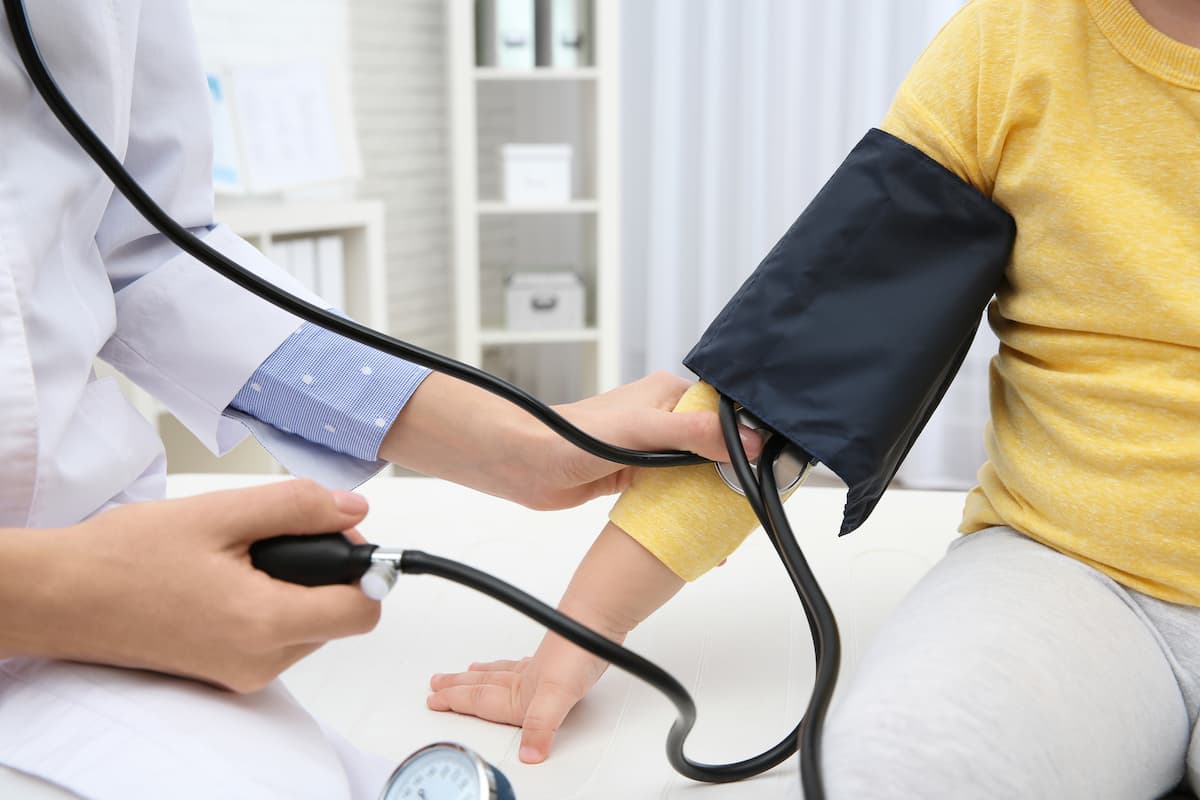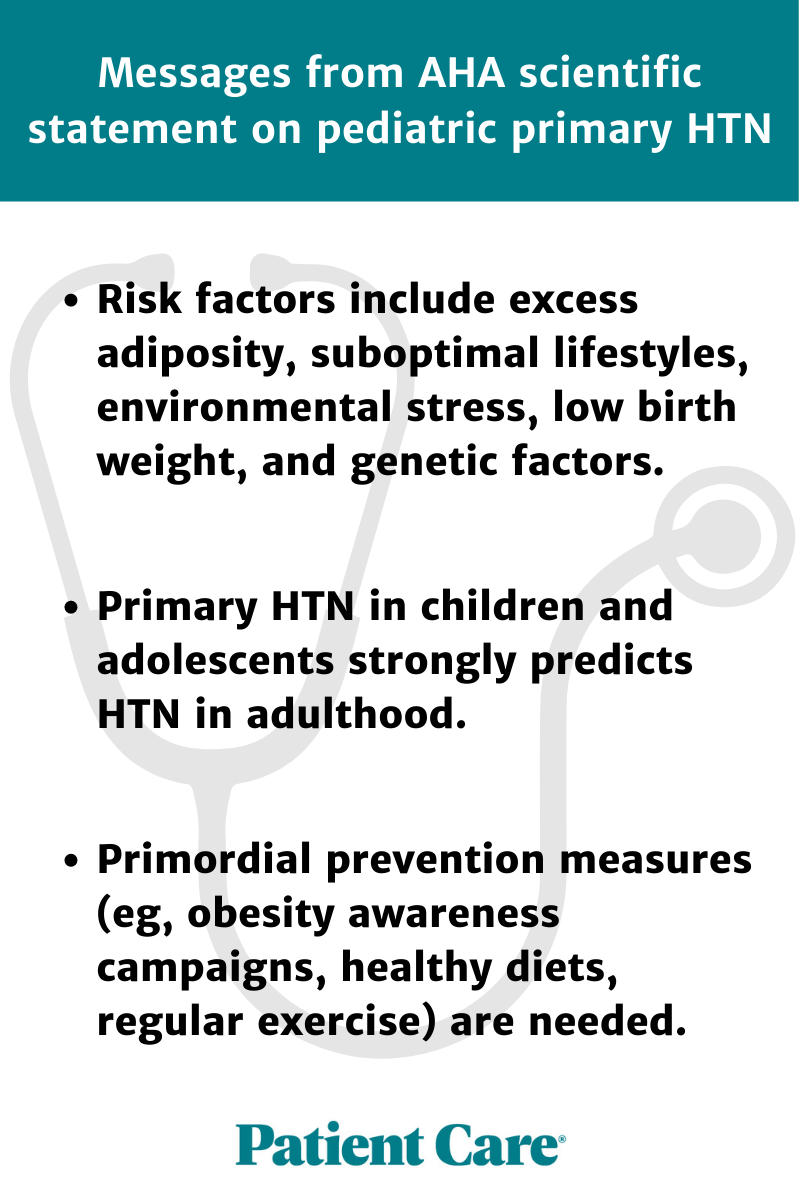Primary Hypertension in Children and Adolescents “Underrecognized,” According to New AHA Scientific Statement
Pediatric hypertension and the need for appropriate diagnosis, treatment, and reduction of lifestyle risk factors outlined in new scientific statement.

The leading type of childhood hypertension (HTN) is primary HTN, especially in adolescence, raising the risk for cardiovascular disease (CVD) events in adulthood, according to a new scientific statement from the American Heart Association (AHA) published in Hypertension.
The overall prevalence of HTN in childhood is 2% to 5%, driven by the childhood obesity epidemic. In the statement, the authors note that children with blood pressure (BP) levels in the higher range of the BP distribution tend to maintain that level into adulthood, “thus raising the risk for subsequent CVD events.” Adolescents entering adulthood with a BP <120/80 mm Hg is an optimal goal, according to researchers.

“Primary hypertension onset in childhood is not a benign condition,” said Bonita Falkner, MD, chair of the scientific statement writing committee in an AHA press release. “This is a health problem that is often amplified by lifestyle and behaviors, many of which are modifiable. Since kids with high blood pressure levels tend to maintain high blood pressure into adulthood, diagnosing and appropriately addressing high blood pressure in youth is imperative to ensure improved lifetime health as early as possible.”
Risk factors for HTN in children and adolescents that are not modifiable include genetics, low birth weight, and environmental exposures. Risk factors that are modifiable include obesity, physical activity, and nutrition. A recent meta-analysis of 18 studies with high-quality data on sodium intake and BP measurements found that systolic BP increased by 0.8 mm Hg and diastolic BP increased by 0.7 mm Hg for every additional gram of daily sodium intake. This is a point of concern because dietary sodium intake among children and adolescents in the US is “far above” recommended levels, largely due to consumption of processed foods.
“A healthy lifestyle in childhood may be extremely helpful in mitigating the risk of developing hypertension in youth,” said Falkner, who is also an emeritus professor of medicine and pediatrics at Thomas Jefferson University in Philadelphia. “Preventive measures for families that promote healthy lifestyles in children are important, such as eating healthy food, encouraging physical activity that leads to improved physical fitness and healthy sleep, and avoiding the development of obesity. Regular blood pressure monitoring by a health care clinician is also essential so that if high blood pressure is present, it can be quickly detected and addressed.”
The statement notes that primordial prevention is an important public health goal; a population with lower BP will have fewer comorbidities related to HTN and CVD. “Ongoing primordial prevention efforts such as obesity prevention campaigns that promote increased physical activity and healthy diets such as the DASH [Dietary Approaches to Stop Hypertension] diet may contribute to a reduced prevalence of hypertension,” wrote Falkner and colleagues. “Of the behavioral risk factors for hypertension in youth, poor diet has the highest prevalence and may offer the greatest opportunity for intervention.”
Clinicians and policymakers should also consider social determinants of health when assessing patients, including factors such as food insecurity and exposure to traumatic events.
“These factors can strongly affect whether an individual or family has access to the resources needed to implement primordial prevention strategies,” wrote researchers. “Of interest are strategies to prevent or mitigate these conditions by improving access to healthy foods and health care, increasing social support for families, and promoting resiliency with subsequent effects on childhood BP and hypertension.”
Also, the authors wrote that applying lower sodium content standards to commercially processed and prepared foods in the US and including healthier food choices in schools could lead to a reduction of almost 700 mg sodium per day in children.
“There is a need for increased understanding and greater research surrounding high blood pressure in youth,” stated Falkner. “Future studies to improve both the recognition and diagnosis of high blood pressure in this age group, as well as clinical trials to evaluate medical treatment and recommend public health initiatives, are all vital to improving the increase we are seeing in hypertension in children.”
Reference: Falkner B, Gidding SS, Brady TM, et al. Pediatric primary hypertension: An underrecognized condition: A scientific statement from the American Heart Association. Hypertension. Published online March 30, 2023. doi:10.1161/HYP.0000000000000228.
